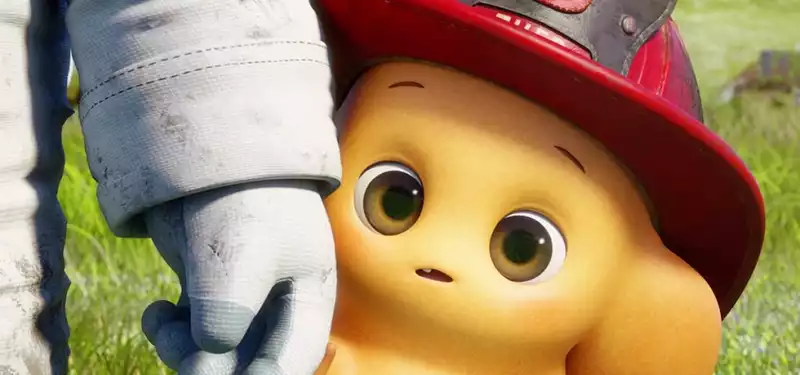Oct 5, 2016
Exclusive "Moom" Trailer: "The Dam Keeper" Filmmakers Discuss Japanese Influences on Their Latest Film
The trailer for Dice Tsutsumi and Robert Kondo's latest short film "Moom" has been released.
"Moom" is a 13-minute short film directed by Tsutsumi and Kondo, creators of the Academy Award-nominated short "The Dam Keeper," through their production company Tonko House. The film deviates relatively significantly from the 2D animation feel of "The Dam Keeper" and relies more on a 3D/CG approach. More notably, "Moom" employs a number of Japanese animators, and the filmmakers intentionally attempt to infuse a different sensibility into the film.
"Moom" is based on a Japanese children's book by Genki Kawamura about a creature who helps people release their memories in a strange world. The picture book was illustrated by Yuki Mashiko, and the Japanese influence was obvious from the start. However, Tsutsumi and Kondo were particularly interested in influencing the style of filmmaking by having their animation produced in Japan, even though they were based in San Francisco.
"Much of the animation direction was done via videoconference, so we spent a lot of time preparing," Kondo said.
"Ultimately, Dice would send us notes in Japanese and we would discuss things. It was difficult to be in Japan and not be able to check the work in person. This meant that Dice had to be very careful in his approach to give feedback and provide proper motivation."[8The directors say that they encouraged the Japanese team (of the animation studio Marza Animation Planet) to participate and help in the production of the film. Unlike in the U.S., it is believed that animators in Japan are not in the habit of proposing new ideas. In the previous American production of "The Dam Keeper," Tsutsumi and Kondo clearly relied on the staff to offer suggestions on how to make the film better, and they wanted to create a similar environment with the Japanese animators for "Moom."
"After all," says Kondo, "I liked working with Japanese animators.
The filmmakers expanded Mumm's world by starting with the look of a picture book and taking a CG approach. This technique allowed for rich textures of "forgotten" objects in the film and spectacular views of meadows and hills that were not available in traditional animation.
"This story could have been told in 2D," Tsutsumi says. But the experience we wanted to provide, and what we wanted to focus on as filmmakers, was more closely tied to our experience working on CG images at Pixar."
"CG lighting experts like Manabu Nakatani helped us in post, in addition to the work we did at Marza," Tsutsumi added.
"Programs like Nuke were utilized to adjust the lighting after rendering.Using these techniques, the directors focused on the character's encounter with another memory and his repeated loss and growth. Their work was inspired by Kondo's grandmother's death when he was four years old, and Mumm's story was set around that age, with an accompanying animation style.
"For Robert, it was the first time in his life that he had lost someone he cared deeply about. At that young age, it was difficult for him to comprehend what it meant to be separated from someone he loved forever." Mumm's character is similar in his difficulty in understanding loss and separation."
Kondo added, "During the making of the film, Dice's son was about that age and we used videos of him walking and moving as a reference. It's fascinating to see the innocence of a child who is getting used to being athletic."
"The film is a great way to show the innocence of a child who is getting used to being athletic.
"Moom" has already won 20 awards at various short film festivals (it has screened at 66 festivals so far) and will next screen at the Chicago International Children's Film Festival on November 2. Tsutsumi and Kondo are currently working on the second book in a three-book graphic novel series and a feature film adaptation of The Dam Keeper.
"We continue to work on the craft of storytelling, telling stories that come from deep within us so that audiences can relate to them.
"As we continue to make films in Japan and dream of making stories and films elsewhere, we hope to find places that might benefit from working with us, and places that might learn and benefit from our work.
.



Post your comment